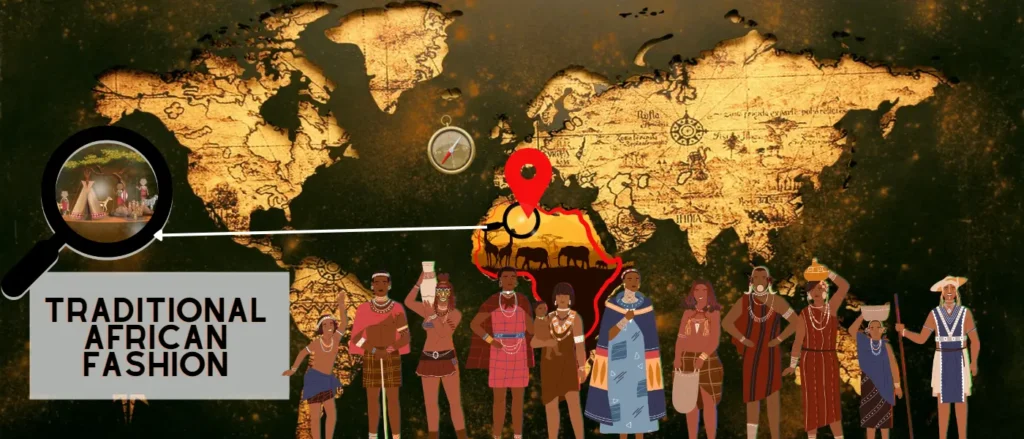African fashion is as diverse and dynamic like the continent itself, with a rich tapestry of colors, textures and symbolism that reflect the cultures and traditions of its people. From the bold, geometric designs of West Africa to the intricate beadwork of Southern Africa, the fashion has captured the attention of designers and fashion enthusiasts around the world. In this article, we will take a closer look at the history and significance of African fashion, from its traditional roots to its modern interpretations.
The History and Significance of African Fashion
African fashion has a long and storied history, dating back to ancient times. Many of the traditional styles and techniques are used in African fashion now been passed down through generations and are still used today. Some of the most iconic traditional African fashion trends include
Kente cloth, a colorful woven fabric traditionally worn by the Akan people of Ghana
Dashiki, a loose-fitting, brightly colored shirt worn by men and women across West Africa
Ankara, a vibrant, printed cotton fabric that originated in West Africa and is now popular across the continent
Maasai beadwork, intricate jewelry and accessories made by the Maasai people of Kenya and Tanzania
These traditional styles are often steeped in symbolism and meaning, reflecting the cultural identity and values of the people who wear them.
Modern African Fashion
In recent years, African fashion has undergone a transformation, with modern designers incorporating traditional styles and techniques into contemporary designs. This fusion of old and new has resulted in some truly stunning and innovative fashion, showcasing the creativity and diversity of African culture.
Some of the most popular modern African fashion trends include:
- Afrocentric prints and patterns, featuring bold, colorful designs inspired by traditional African motifs
- Contemporary interpretations of traditional styles, such as the dashiki and kente cloth
- African-inspired accessories, such as beaded necklaces, bracelets, and earrings
- Sustainable and ethical fashion, with designers incorporating eco-friendly materials and fair labor practices into their designs
The Impact of African Fashion
- In recent years, African fashion has experienced a transformation, with modern designers incorporating traditional styles and techniques into contemporary designs. This fusion of old with new has resulted in some truly stunning and innovative fashion, showcasing the creativity and diversity of African culture.
- Some of the most popular modern African fashion trends include:
- Africentric prints and patterns, featuring bold, colourful designs inspired by traditional African motifs
- Contemporary representations of traditional styles such as the dashiki and kente cloth
- African-inspired accessories, such as beaded necklaces, bracelets and earrings
- sustainable and ethical fashion, with designers incorporating eco-friendly materials and fair labour practices into their designs
- African fashion has had a world-shaking impact on the global fashion industry, inspiring many designers and fashion enthusiasts around the world, and also playing an important role in promoting African culture and identity and challenging stereotypes and misconceptions about the continent.
- Some examples of how African fashion has made an impact include:
- Promote African designers and models on the global stage, increasing the visibility and representation of African culture and talent
- Providing economic opportunities for artisans and small-scale producers by supporting local communities and promoting sustainable practices
- Challenging stereotypes and delusions about Africa, showcasing the creativity, diversity, and vibrancy of African culture
FAQ’s
Q: What is the significance of colors and patterns in African fashion?
Colors and patterns in African fashion often have cultural and symbolic significance, reflecting the values, beliefs and identity of the people who wear. For example, the color red is often associated with royalty and power in West Africa, while the colors black and white represent the balance of opposites as per many African cultures.
How can I incorporate African fashion into my wardrobe?
There are many ways to incorporate African fashion into your wardrobe, from wearing traditional fabrics like kente cloth and ankara to accessorizing with beaded jewelry and African-inspired prints. You can also look up for modern interpretations of African styles, such as contemporary dashiki or afrocentric prints.




